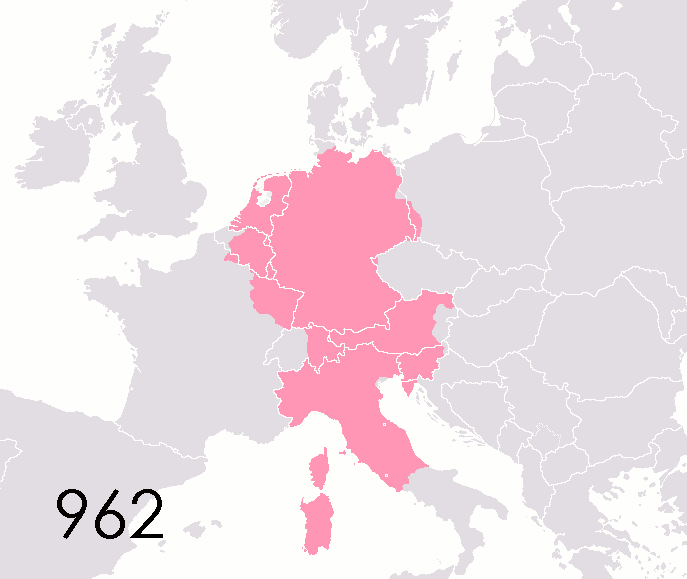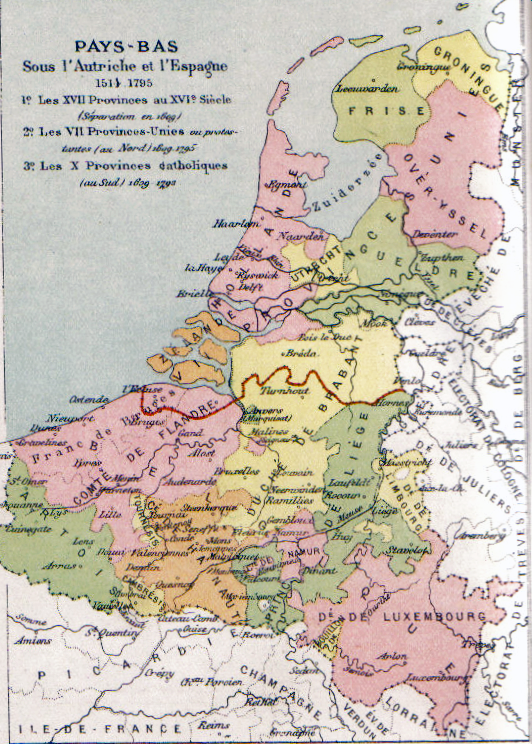|
County Of Brabant
The Landgraviate of Brabant (Modern , Modern ) was a small imperial fiefdom west of Brussels, consisting of the area between the Dender and Zenne rivers in the Low Countries, then part of the Holy Roman Empire. Before 1085 the land had belonged to Hermann II, Count Palatine of Lotharingia. Upon his death, Emperor Henry IV assigned it to Henry III, Count of Louvain and Brussels, granting him the Landgraviate of Brabant. This is the earliest known use of the term landgrave. In 1183 the landgraviate of Brabant and the counties of Louvain and Brussels were formally merged and elevated together into the Duchy of Brabant, by Emperor Frederick Barbarossa; Henry I became the first duke of Brabant. The area made up part of South Brabant from 1815 to 1830 as part of the United Kingdom of the Netherlands, and part of the Belgian Province of Brabant from 1830 to 1996. It is currently in the western part of Flemish Brabant in the Flemish Region The Flemish Region (, ), usually sim ... [...More Info...] [...Related Items...] OR: [Wikipedia] [Google] [Baidu] |
Middle Ages
In the history of Europe, the Middle Ages or medieval period lasted approximately from the 5th to the late 15th centuries, similarly to the post-classical period of global history. It began with the fall of the Western Roman Empire and transitioned into the Renaissance and the Age of Discovery. The Middle Ages is the middle period of the three traditional divisions of Western history: classical antiquity, the medieval period, and the modern period. The medieval period is itself subdivided into the Early, High, and Late Middle Ages. Population decline, counterurbanisation, the collapse of centralised authority, invasions, and mass migrations of tribes, which had begun in late antiquity, continued into the Early Middle Ages. The large-scale movements of the Migration Period, including various Germanic peoples, formed new kingdoms in what remained of the Western Roman Empire. In the 7th century, North Africa and the Middle East—once part of the Byzantine Empire� ... [...More Info...] [...Related Items...] OR: [Wikipedia] [Google] [Baidu] |
Landgrave
Landgrave (, , , ; , ', ', ', ', ') was a rank of nobility used in the Holy Roman Empire, and its former territories. The German titles of ', ' ("margrave"), and ' ("count palatine") are of roughly equal rank, subordinate to ' ("duke"), and superior to the rank of a ' ("count"). Etymology The English word landgrave is the equivalent of the German ''Landgraf'', a compound of the words ''Land'' and ''Graf'' (English: Count). Description The title referred originally to a count who possessed imperial immediacy, or a feudal duty owed directly to the Holy Roman Emperor. His jurisdiction stretched over a sometimes quite considerable territory, which was not subservient to an intermediate power, such as a duke, a bishop or count palatine. The title originated within the Holy Roman Empire (first recorded in Lower Lotharingia from 1086: Henry III, Count of Louvain, as landgrave of Brabant). By definition, a landgrave exercised sovereign rights. His decision-making power was compar ... [...More Info...] [...Related Items...] OR: [Wikipedia] [Google] [Baidu] |
1180s Disestablishments In Europe , synthetic chemical element with atomic number 118
{{Numberdis ...
118 may refer to: *118 (number) *AD 118 *118 BC *118 (TV series) *118 (film) *118 (Tees) Corps Engineer Regiment *118 (Tees) Field Squadron, Royal Engineers *118 Peitho, a main-belt asteroid See also *11/8 (other) *Oganesson Oganesson is a synthetic element, synthetic chemical element; it has Chemical symbol, symbol Og and atomic number 118. It was first synthesized in 2002 at the Joint Institute for Nuclear Research (JINR) in Dubna, near Moscow, Russia, by a joint ... [...More Info...] [...Related Items...] OR: [Wikipedia] [Google] [Baidu] |
1085 Establishments In Europe
1 (one, unit, unity) is a number, numeral, and glyph. It is the first and smallest positive integer of the infinite sequence of natural numbers. This fundamental property has led to its unique uses in other fields, ranging from science to sports, where it commonly denotes the first, leading, or top thing in a group. 1 is the unit of counting or measurement, a determiner for singular nouns, and a gender-neutral pronoun. Historically, the representation of 1 evolved from ancient Sumerian and Babylonian symbols to the modern Arabic numeral. In mathematics, 1 is the multiplicative identity, meaning that any number multiplied by 1 equals the same number. 1 is by convention not considered a prime number. In digital technology, 1 represents the "on" state in binary code, the foundation of computing. Philosophically, 1 symbolizes the ultimate reality or source of existence in various traditions. In mathematics The number 1 is the first natural number after 0. Each natural numbe ... [...More Info...] [...Related Items...] OR: [Wikipedia] [Google] [Baidu] |
States And Territories Disestablished In The 1180s
State most commonly refers to: * State (polity), a centralized political organization that regulates law and society within a territory **Sovereign state, a sovereign polity in international law, commonly referred to as a country **Nation state, a state where the majority identify with a single nation (with shared culture or ethnic group) ** Constituent state, a political subdivision of a state ** Federated state, constituent states part of a federation *** U.S. state * State of nature, a concept within philosophy that describes the way humans acted before forming societies or civilizations State may also refer to: Arts, entertainment, and media Literature * '' State Magazine'', a monthly magazine published by the U.S. Department of State * ''The State'' (newspaper), a daily newspaper in Columbia, South Carolina, United States * '' Our State'', a monthly magazine published in North Carolina and formerly called ''The State'' * The State (Larry Niven), a fictional future governm ... [...More Info...] [...Related Items...] OR: [Wikipedia] [Google] [Baidu] |
Counties Of The Holy Roman Empire
This list of states in the Holy Roman Empire includes any territory ruled by an authority that had been granted imperial immediacy, as well as many other feudal entities such as lordships, sous-fiefs, and allodial fiefs. The Holy Roman Empire was a complex political entity that existed in central Europe for most of the medieval and early modern periods and was generally ruled by a German-speaking Emperor. The states that composed the Empire, while enjoying a form of territorial authority called ''Landeshoheit'' that granted them many attributes of sovereignty, were never fully sovereign states in the sense that term is understood presently. In the 18th century, the Holy Roman Empire consisted of approximately 1,800 such territories, the majority being tiny estates owned by the families of Imperial Knights. This page does not directly contain the list but discusses the format of the various lists and offers some background to understand the complex organisation of the Holy Roman E ... [...More Info...] [...Related Items...] OR: [Wikipedia] [Google] [Baidu] |
Flemish Region
The Flemish Region (, ), usually simply referred to as Flanders ( ), is one of the three communities, regions and language areas of Belgium, regions of Belgium—alongside the Wallonia, Walloon Region and the Brussels, Brussels-Capital Region. Covering the northern portion of the country, the Flemish Region is primarily Dutch language, Dutch-speaking. With an area of , it accounts for only 45% of Belgium's territory, but 58% of its population. It is one of the most densely populated regions of Europe with around . The Flemish Region is distinct from the Flemish Community: the latter encompasses both the inhabitants of the Flemish Region and the Dutch-speaking minority living in the Brussels, Brussels-Capital Region. It borders the Netherlands and France. Politics Immediately after its establishment in 1980, the region transferred all its constitutional competencies to the Flemish Community. Thus, the current Flemish authorities (Flemish Parliament and Flemish Government) repre ... [...More Info...] [...Related Items...] OR: [Wikipedia] [Google] [Baidu] |
Flemish Brabant
Flemish Brabant ( ; ) is a province of Flanders, one of the three regions of Belgium. It borders on (clockwise from the North) the Belgian provinces of Antwerp, Limburg, Liège, Walloon Brabant, Hainaut and East Flanders. Flemish Brabant also surrounds the Brussels-Capital Region. Its capital is Leuven. It has an area of which is divided into two administrative districts (''arrondissementen'' in Dutch) containing 65 municipalities. As of January 2024, Flemish Brabant had a population of over 1.19 million. Flemish Brabant was created in 1995 by the splitting of the former province of Brabant into three parts: two new provinces, Flemish Brabant and Walloon Brabant; and the Brussels-Capital Region, which no longer belongs to any province. The split was made to accommodate the eventual division of Belgium in three regions (Flanders, Wallonia and the Brussels-Capital Region). The province is made up of two arrondissements. The Halle-Vilvoorde Arrondissement surrounds Brussels a ... [...More Info...] [...Related Items...] OR: [Wikipedia] [Google] [Baidu] |
Province Of Brabant
The Province of Brabant (, ; ) was a province in Belgium from 1830 to 1995. It was created in 1815 as South Brabant, part of the United Kingdom of the Netherlands. In 1995, it was split into the Dutch-speaking Flemish Brabant, the French-speaking Walloon Brabant and the bilingual Brussels-Capital Region. History United Kingdom of the Netherlands After the defeat of Napoleon in 1815, the United Kingdom of the Netherlands was created at the Congress of Vienna, consisting of territories which had been added to France by Napoleon: the former Dutch Republic and the Southern Netherlands. In the newly created kingdom, the former French département of Dyle became the new province of South Brabant, distinguishing it from Central Brabant (later Antwerp province); and from North Brabant (now part of the Netherlands), all named after the former Duchy of Brabant. The provincial governors during this time were: * 1815–1818: François Joseph Charles Marie de Mercy-Argenteau * 1818– ... [...More Info...] [...Related Items...] OR: [Wikipedia] [Google] [Baidu] |
United Kingdom Of The Netherlands
The United Kingdom of the Netherlands is the unofficial name given to the Kingdom of the Netherlands as it existed from 1815 to 1839. The United Netherlands was created in the aftermath of the Napoleonic Wars through the fusion of territories that had belonged to the former Dutch Republic, Austrian Netherlands, and Prince-Bishopric of Liège in order to form a buffer state between the major European powers. The polity was a constitutional monarchy, ruled by William I of the Netherlands, William I of the House of Orange-Nassau. The polity collapsed in 1830 with the outbreak of the Belgian Revolution. With the ''de facto'' secession of Belgium, the Netherlands was left as a rump state and refused to recognise Belgian independence until 1839 when the Treaty of London (1839), Treaty of London was signed, fixing the border between the two states and guaranteeing Belgian independence and neutrality as the Kingdom of Belgium. Today, the Netherlands and Belgium are still kingdoms and Lu ... [...More Info...] [...Related Items...] OR: [Wikipedia] [Google] [Baidu] |
Duke Of Brabant
The Duke of Brabant (, ) was the ruler of the Duchy of Brabant since 1183/1184. The title was created by the Holy Roman Emperor Frederick Barbarossa in favor of Henry I, Duke of Brabant, Henry I of the House of Reginar, son of Godfrey III of Leuven (who was duke of Lower Lorraine at that time). The Duchy of Brabant was a feudal elevation of the existing (since 1085/1086) title of landgrave of Brabant. This was an Imperial fief which was assigned to Count Henry III of Leuven shortly after the death of the preceding count of Brabant, Herman II of Lotharingia (born 20 September 1085). Although the corresponding county was quite small (limited to the territory between the rivers Zenne, Senne and Dender) its name was applied to the entire country under control of the dukes from the 13th century on. In 1190, after the death of Godfrey III, Henry I also became duke of Lotharingia. Formerly Lower Lotharingia, this title was now practically without territorial authority, but was borne by ... [...More Info...] [...Related Items...] OR: [Wikipedia] [Google] [Baidu] |


